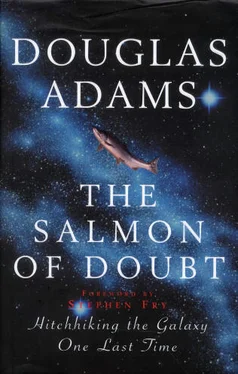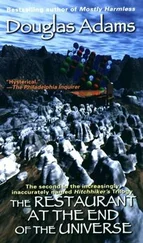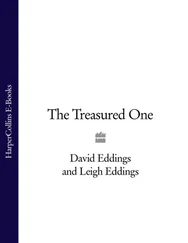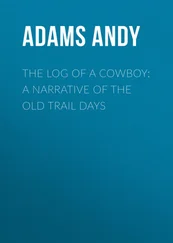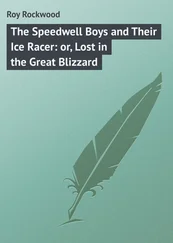Douglas Adams
The Salmon of Doubt
I first met Douglas Adams in 1990. Newly appointed his editor at Harmony Books, I had flown toLondon in search of Douglas ’s long-overdue fifth Hitchhiker novel, Mostly Harmless. No sooner was I buzzed in the door to the Adams residence in Islington than a large, ebullient man bounded down the long staircase, greeted me warmly, and thrust a handful of pages at me. “See what you think of these,” he said over his shoulder as he bounded back up the stairs. An hour later he was back, new pages in hand, eager to hear my opinion of the first batch. And so the afternoon passed, quiet stretches of reading alternating with more bounding, more conversation, and fresh pages. This, it turned out, was Douglas ’s favorite way of working.
In September 2001, four months after Douglas ’s tragic, unexpected death, I received a phone call from his agent, Ed Victor. A good friend had preserved the contents of Douglas ’s many beloved Macintosh computers; would I be interested in combing through the files to see if they contained the makings of a book? A few days later a package arrived, and, curiosity whetted, I tore it open. My first thought was that Douglas ’s friend, Chris Ogle, had undertaken a Herculean task—which, as it turned out, he had. The CD-ROM onto which Douglas ’s writing had been collected contained 2,579 items, ranging from huge files that stored the complete text of Douglas ’s books to letters on behalf of “Save the Rhino,” a favorite charity. Here, too, were fascinating glimpses into dozens of half-brewed ideas for books, films, and television programs, some as brief as a sentence or two, others running to half-a-dozen pages. Alongside these were drafts of speeches, pieces Douglas had written for his website, introductions to various books and events, and musings on subjects near to Douglas’s heart: music, technology, science, endangered species, travel, and single-malt whisky (to name just a few). Finally, I found dozens of versions of the new novel Douglas had been wrestling with for the better part of the past decade. Sorting these out to arrive at the work-in-progress you’ll find in the third section of this book would prove my greatest challenge, although that makes it sound difficult. It was not. As quickly as questions arose they seemed to answer themselves.
Conceived as a third Dirk Gently novel, Douglas ’s novel-in-progress began life as A Spoon Too Short, and was described as such in his files until August 1993. From this point forward, folders refer to the novel as The Salmon of Doubt, and fall into three categories. From oldest to most recent, they are: “The Old Salmon,” “The Salmon of Doubt,” and “LA/Rhino/Ranting Manor.” Reading through these various versions, I decided that for the purposes of this book, Douglas would be best served if I stitched together the strongest material, regardless of when it was written, much as I might have proposed doing were he still alive. So from “The Old Salmon” I reinstated what is now the first chapter, on DaveLand. The following six chapters come intact from the second, and longest, continuous version, “The Salmon of Doubt.” Then, with an eye to keeping the story line clear, I dropped in two of his three most recent chapters from “LA/Rhino/Ranting Manor” (which became Chapters Eight and Nine). For Chapter Ten I went back to the last chapter from “The Salmon of Doubt,” then concluded with the final chapter from Douglas ’s most recent work from “LA/Rhino/Ranting Manor.” To give the reader a sense of what Douglas planned for the rest of the novel, I preceded all this with a fax from Douglas to hisLondon editor, Sue Freestone, who worked closely with Douglas on his books from the very first. Inspired by reading theseAdams treasures on the CD-ROM, I enlisted the invaluable aid of Douglas ’s personal assistant, Sophie Astin, to cast the net wider. Were there other jewels we might include in a book tribute to Douglas ’s life? As it turned out, during fallow periods between books or multimedia mega-projects, Douglas had written articles for newspapers and magazines. These, together with the text on the CD-ROM, provided the magnificent pool of writings that gave life to this book.
My most recent visit with Douglas took place inCalifornia , our afternoon stroll alongSanta Barbara ’s wintry beach punctuated by running races with his then six-year-old daughter, Polly. I had never seen Douglas so happy, and I had no inkling that this time together would be our last. Since Douglas died he has come to mind with astonishing frequency, which seems to be the experience of many who were close to him. His presence is still remarkably powerful nearly a year after his death, and I can’t help thinking he had a hand in the amazing ease with which this book came together. I know he would have keenly wanted you to enjoy it, and I hope you will.
Peter Guzzardi Chapel Hill,North Carolina FEBRUARY 12, 2002
Grateful acknowledgment is made to the following for permission to reprint previously published material: American Atheist Press: “Interview with Douglas Adams” American Atheist, vol. 40, no. 1
(Winter 2001-2002). Reprinted by permission of the American Atheist Press. Byron Press Visual Publications:
SATURDAY, JUNE 3, 2000
In 1979, soon after The Hitchhiker’s Guide to the Galaxy was published, Douglas Adams was invited to sign copies at a small science-fiction bookshop inSoho . As he drove there, some sort of demonstration slowed his progress. “There was a traffic jam and crowds of people were everywhere,” he recalls. It wasn’t until he had pushed his way inside thatAdams realised the crowds were there for him. Next day his publisher called to say he was number one in the London Sunday Times best-seller list and his life changed forever. “It was like being helicoptered to the top ofMount Everest ,” he says, “or having an orgasm without the foreplay.”
Hitchhiker had already been a cult radio show, and was made in both television and stage versions. It expanded into four more books that sold over 14 million copies worldwide. There were records and computer games and now, after twenty years ofHollywood prevarication, it is as close as it’s ever been to becoming a movie.
The story itself begins on earth with mild-mannered suburbanite Arthur Dent trying to stop the local council demolishing his house to build a bypass. It moves into space when his friend, Ford Prefect—some have seen him as Virgil to Dent’s Dante—reveals himself as a representative of a planet near Betelgeuse and informs Arthur that the Earth itself is about to be demolished to make way for a hyperspace express route. They hitch a ride on a Vogon spaceship and begin to use the Hitchhiker’s Guide itself—a usually reliable repository of all knowledge about life, the universe and everything.
Adams’s creativity and idiosyncratic intergalactic humour have had a pervasive cultural influence. The phrase “hitchhiker’s guide to ...” quickly became common parlance, and there have been numerous copycat spoof sci-fi books and TV series. His Babel fish—a small fish you can place in your ear to translate any speech into your own language—has been adopted as the name of a translation device on an Internet search engine. He followed up his success with several other novels as well as a television programme, and a book and CD-ROM on endangered species. He has founded a dot-com company, H2G2, that has recently taken the idea of the guide full circle by launching a service that promises real information on life, the universe, and everything via your mobile phone. Much of his wealth seems to have been spent fuelling his passion for technology, but he has never really been the nerdy science-fiction type.
Читать дальше
